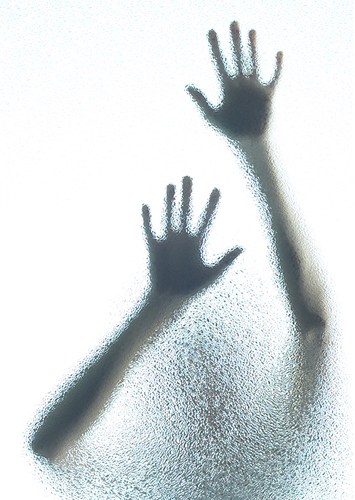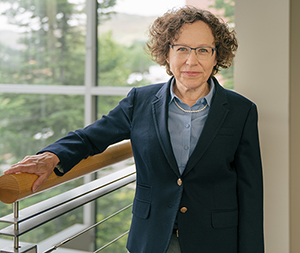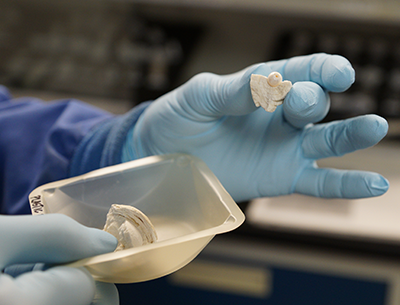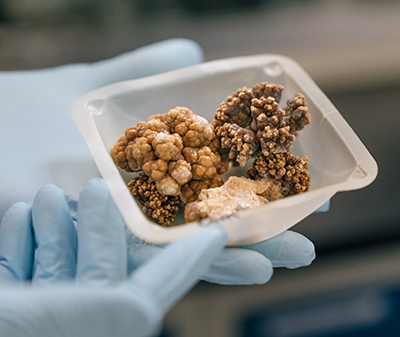Very Scary True Stories and Entombed Mysteries

It woke me up in the middle of the night.
It left me gasping and sobbing. Screaming.
Someone was sticking a knife in me and slowly turning it.
Is this a nightmare? PTSD from an especially contentious election year? Or are they descriptions of the pain involved in passing a kidney stone? “It’s like giving birth to a watermelon,” expressed one man, sheepishly admitting he had never passed an 8 lb. baby. One in eleven Americans will experience kidney stones at least once in their lifetime, and if preventative measures aren’t taken, at least half of those will have another episode within ten years.
Incidence of this estimated to cost$5.3 billion per year in healthcare dollars.
Stones develop when calcium combines with either oxalate or phosphorous; they can also form from uric acid, which is produced as the body metabolizes animal protein.
Food That Helps Stones Grow
“There are a lot of myths about what causes or prevents kidney stones, but what is good for one person may have no benefit in another,” adds Hamilton. “If you want to make changes, you have to know what changes will be helpful, especially when it has become a recurring problem.” Typically, urologists will analyze the chemical concentrations in their patients’ urine to determine specific causes.
Stones can be caused by a variety of conditions, including diet, poor hydration, infections, medications, and genetic disorders (e.g., cystinuria and hyperoxaluria). “Some people just excrete more calcium into their urine, and it crystalizes,” adds Hamilton.

Medical providers order testing to determine the chemical composition of the patient’s stone. Knowing the components of the stone helps guide treatment to decrease the likelihood of stones forming again and allows providers to educate their patients on factors that may be contributing to the stones.
Elizabeth Frank, PhD, DABCC, ARUP Medical Director
For those prone to stones, staying well hydrated— particularly in the summer when the formation of stones is more likely—can decrease incidences. While caffeine, sodas, and alcohol all contribute to dehydration, there are conflicting studies on whether they really cause stones. But all agree water is best, though the citrate in some citrus beverages, like lemonade and orange juice, can help block stone formation. Drinking two and a half liters of fluid daily is recommended for those susceptible to stones.
Foods rich in oxalate, such as spinach, berries, nuts, quinoa, beets, black teas, and chocolate (the darker the more oxalate), can contribute to stone formation. Eating too much animal protein, such as red meat, poultry, eggs, and seafood, boosts the level of uric acid and could lead to kidney stones. A high-protein diet also reduces urinary citrate, a component that helps prevent stones from forming.
A Descent into Utah’s Miniature Stone Quarry

ARUP was one of the first reference laboratories in the country to start offering stone analysis, just a year after the young start-up began in 1984. And for the last 25 years, those in the Calculiand Manual Chemistry section have collected the most unusual of kidney, bladder, and gallbladder stones sent for analysis. In this collection, known as the “Stone Quarry,” some stones defy logic, some sparkle, and some weigh a pound. Others have stories buried within them, like the pearl or the rhinestones each entombed in a kidney stone. Another contains a bullet.
Teri Wojcik, a recently retired senior medical technologist and the collection’s unofficial muse, has educated and entertained people over the last 20 years about kidneys, calculi, and the hands-on process and technology involved in stone analysis. The resulting information helps physicians determine the cause and best treatments for the stones.
Wojcik pulls out a delicate transparent box, seemingly arranged with perfect, mini seashells: a snail, a spiny sea urchin, a spiraling conch—all from the body, not the sea. These are a mix of kidney and bladder stones, a few from dogs submitted when ARUP had an animal reference pathology lab.
In ARUP’s Stone Quarry, some stones defy logic, some sparkle, and some weigh a pound. Others have stories buried within them, like the pearl or the rhinestones each entombed in a kidney stone. Another contains a bullet.
Another container harbors a bent suture needle, stitching threads, staples—all items found in stones and left in the body from some previous operation. “The body being the wonderful thing that it is coats those things with either protein or calcium phosphate to help them travel more smoothly as they journey through,” says an upbeat Wojcik.
There’s the “gravel in the urine” stones made of uric acid, often caused by gout; the “stag horns” and “coral” stones (kidney stones); and the “river rocks” (bladder stones), smoothed by the ebb and flow of “water” in the bladder. As Wojcik holds up different stones, Marlene Thaitumu, senior technologist specialist, identifies what comprises each one: “Uric acid, calcium oxalate, calcium phosphate, magnesium ammonium phosphate.” A crystalline gallstone is composed of “pure cholesterol.”
“A two millimeter stone is tiny, but passing a stone that size is still painful to the individual,” says Thaitumu. “Anything larger than 8 millimeters usually needs surgery or lithotripsy.” An alternative to surgery, lithotripsy uses shock waves to break down stones into smaller fragments that can be passed through the body.
When stones arrive in the lab, they are first analyzed externally for shape, color, size, then weighed and cut in half to reveal the core; this center is the genesis of what led to stone formation (i.e., calcium, oxalate, uric acid). The stone is then ground using the Stone Crusher, developed by ARUP’s bioengineers, and finally subjected to FTIR—Fourier transform infrared spectroscopy—a technique that analyzes the composition.

“Determination of chemical composition is the main reason medical providers order stone testing,” explains Elizabeth Frank, PhD, medical director of ARUP’s Calculi and Manual Chemistry Lab. ”Knowing what is present in the stone can help determine the best treatment to decrease the likelihood of stones forming again and helps providers educate their patients on how their diet and lifestyle may be contributing to the stones.” When a doctor expressed how impactful it would be to show his patient the stone, Frank’s lab added a test that includes a photo in the report and is one of only a few labs to do so.
Surgery to remove stones is a last resort; most people don’t require surgery. “It really depends on the size of the stone, the patient’s pain level, and if the obstruction could cause damage,” explains urologist Hamilton. “We usually give people a chance to pass them, which could range from two days to two months.” Proof that even nightmares—and elections—come to an end.
WARNING: ROCKY ROAD AHEAD
Men are two to three times more likely than women to experience kidney stones.
Tests for Avoiding Stones When a stone is not available for analysis or if patients want to know if they are at risk of forming stones, three ARUPdesigned urinary analysis panels are available to help assess and monitor the likelihood of stone formation. This is also a preventative approach when a patient is known to be at higher risk due to family history.
Each panel includes measurement of the concentrations of certain compounds in the urine (i.e., calcium, oxalate, uric acid, citrate, etc.) that promote or inhibit stone formation. The largest of the three panels, Urine Supersaturation Profile, tests for more than a dozen components. “After measuring the panel components, we use the results to calculate risk for particular types of stones,” explains Golden Welch, ARUP clinical product manager. The varying degrees of risk are presented in a colorful bar graph showing the range of risk for each stone type. “This relative risk is communicated in an enhanced report we provide with the purpose of making it easy for the medical provider to read and, in turn, share the information with the patient.”
Approximately 11 percent of adults in the United States will develop kidney stones in their lifetime. These rates double in patients with a family history.
A smaller panel assesses stone risk but does not include risk calculations, and the smallest panel, the Kidney Stone Risk Panel, can be used to monitor patients with the more common calcium oxalate and uric acid stones. This targeted approach saves the patient money (the larger panels cost more), maximizes efficiency, and avoids unnecessary testing.

















 HOME
HOME